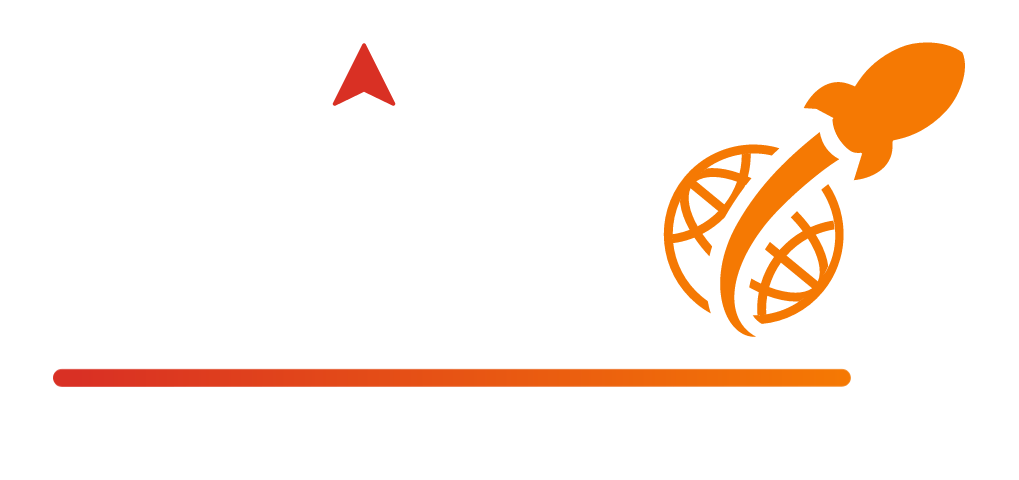Website Development 101 introduces you to the essential aspects of creating and maintaining websites. This guide covers the basics of coding, design, and content management. By the end, you’ll have a solid foundation to start building your own websites.
Key Takeaways
- Website development involves a combination of front-end and back-end skills to create functional and visually appealing websites, requiring proficiency in coding languages like HTML, CSS, and JavaScript.
- Understanding the web development process is essential, encompassing stages from planning and strategy to testing and maintenance to ensure websites meet user needs and business objectives.
- Choosing the right website development agency involves evaluating expertise, reviewing portfolios, and ensuring active client involvement to achieve successful project outcomes.
What is Website Development?
The field of web development is dedicated to the tasks associated with developing websites and web applications. It involves an array of activities from writing code and designing visuals to generating content and configuring network settings. The ultimate aim in website development is crafting platforms that not only operate smoothly but also provide a high-quality experience for end-users.
Depending on what is required or envisioned, the scope of web development can vary from simple static single-page sites to intricate, feature-rich web applications. To accomplish this task successfully, it requires merging programming languages proficiency with stellar web design skills as well as strategic content placement—all aimed at producing aesthetically engaging yet efficient websites that fulfill users’ needs.
Web services play a crucial role in modern web development, particularly in enhancing functionality and user experience. Web developers integrate various web services into web applications to connect different functionalities, working closely with web designers to ensure both technical and aesthetic alignment.
Throughout the process of developing a website, various responsibilities come into play such as implementing code frameworks, managing digital content dynamics, and adjusting networking parameters—fundamental elements for establishing a fully operative online presence. Programmers utilize series after series of coded instructions across multiple languages geared towards conjuring up websites characterized by visual appeal paired with solid operational capabilities.
Proficiency in problem-solving alongside coding expertise are indispensable traits for those working within this domain. Additionally, a comprehensive grasp of both frontend (client-side) technologies and backend (server-side) architectures equips developers comprehensively—that enables them not just to create appealing user interfaces but also to oversee complex server operations along with databases interactions. Grasping these fundamental aspects lays down the groundwork necessary for excelling within the extensive spectrum that constitutes modern-day’s robust world-wide-web creation journey.

Basic Terminology
Grasping the fundamentals of web development begins by getting to grips with critical terminology. For instance, a web server is essentially a computer system tasked with storing site files and supplying them to user browsers when requested. Each internet-enabled device receives its own unique numerical label known as an IP address. The Hypertext Transfer Protocol or HTTP sets out the rules for transferring data across the internet from client to server.
The act of coding involves crafting instructions in a programming language that computers can follow in order to produce software and various types of web applications. These vital instruments are at the heart of what makes up web development, representing key aspects that those aspiring to become proficient web developers must understand if they wish to thrive within this sphere.
Key Components of a Website
Web development is an intricate process that encompasses multiple vital elements working in harmony to build a cohesive and efficient website. The aspect of front-end web development is dedicated to crafting interfaces that are both aesthetically pleasing and user-friendly, ensuring smooth interactions with the website through its layout, design, navigation system, and interactive components. This involves using essential programming languages such as HTML, CSS, and JavaScript to create visually engaging and interactive elements.
Conversely, back-end development deals with activities on the server side. It’s responsible for linking up the database with the front end while managing complex processes like business logic implementation, data transactions as well as configuring servers, all foundational operations needed for seamless website performance. Effective database management also plays a pivotal role here. It involves safekeeping data along with accurate retrieval and handling within a site.
Blending these critical sectors—front-end refinement coupled with robust back-end structures alongside comprehensive database management—is what brings about an integrated web experience where visual charm meets operational strength. Mastery over these domains is imperative for those embarking on a journey into web development territory.
Web Pages and IP Addresses
A web page is essentially a document stored on a web server, accessible through a web browser. Each web page has a unique address known as a URL (Uniform Resource Locator), which serves as its identifier on the internet. When you type a URL into your web browser, it sends a request to the web server hosting the page. The server then responds by sending the requested page back to your browser, allowing you to view the content.
Every device connected to the internet has a unique identifier called an IP address (Internet Protocol address). This series of numbers is crucial for routing data between devices on the internet. When you request a web page, your browser sends a request to the web server, which then uses your IP address to send the page back to you. This process ensures that the data reaches the correct destination, enabling seamless browsing experiences.
Understanding the roles of web pages and IP addresses is fundamental in web development 101. These elements are the building blocks of how the internet functions, making it possible for users to access and interact with web content.
Types of Web Development

The process of web development encompasses three main categories: front-end, back-end, and full-stack. Each category serves a distinct segment of website building and mandates its own specialized knowledge set and abilities. Recognizing the differences between these areas is crucial for anyone involved in the execution of a web development endeavor.
In terms of responsibilities, front-end developers are tasked with designing the visual elements and ensuring user engagement on websites. Conversely, back end developers concentrate on server-side operations including database management to support website functionality. Full-stack developers possess expertise across both domains – they adeptly manage every aspect related to constructing a comprehensive website experience.
Understanding each category’s role enhances comprehension of the entire web development process and aids in selecting an appropriate strategy tailored to your specific developmental project requirements.
Front-End Development
The realm of front-end development is centered around the aspects of web pages that users engage directly with. It emphasizes creating an intuitive user interface (UI) and delivering a seamless user experience (UX), encompassing elements such as layout, design, and interactive features. As a vital part of web development, front-end work ensures that what visitors see and interact with on websites is both functional and appealing.
Developers striving to excel in this area must possess strong skills in HTML, CSS, JavaScript along with familiarity with frameworks like Bootstrap or Foundation. These competencies are key for crafting responsive designs and integrating interactivity into web pages which ultimately elevates the overall browsing experience for users.
Front end developers shoulder the task of materializing visual components alongside ensuring website interactions on various devices remain consistent. This encompasses not only writing code but also architecting layouts—the goal being to make every interaction smooth across different screens sizes using tools like JavaScript to activate dynamic functions including form validations or transitions such as button animations and slideshow navigations.
Frameworks designed specifically for building user interfaces—like React.js, Angular.js, and Vue.js—are pivotal resources within the toolkit for contemporary front end developers. They streamline the process of producing responsive and lively webpages efficiently by providing structured methods to create sophisticated UIs—a critical element throughout their workflow during all stages within frontend development projects.
Back-End Development
The web development process involves a crucial component known as back-end development, which is dedicated to handling the server-side of web applications. This area focuses on the interactions between the server, application, and database that allow for the operational functionality of websites. It mainly deals with server-side programming tasks such as database management and execution of server logic—functions invisible to end-users but integral to powering what users interact with on the front end.
In charge of managing servers and maintaining website performance are back-end developers. Their responsibilities include crafting complex database queries, setting up user authentication systems, and safeguarding data security—all essential for ensuring that a site operates smoothly without interruption. The work they perform underpins front-end features by processing data and implementing business logic required for those elements to function correctly.
To expedite the creation of robust and scalable web applications within this field, back-end developers often utilize prevalent frameworks like Ruby on Rails or Django. These provide preconfigured components and capabilities that streamline aspects of backend construction in web development processes. Serving as indispensable tools in their arsenal enables quicker deployment while adhering to best practices necessary throughout various stages involved in developing efficient online platforms.
Full-Stack Development
In the realm of web development, full-stack development encompasses mastery over both front-end and back-end processes to construct a comprehensive web application. A Full Stack Developer is adept at navigating various programming languages and possesses expertise in both interface creation for users as well as overseeing server-side functionalities.
Possessing knowledge across an extensive array of technologies and coding dialects, full stack developers are pivotal assets within the domain of web construction. These multi-skilled practitioners effortlessly bridge the gap between front-end appearance and back-end mechanics, earning their reputation as versatile experts who can smoothly transition between divergent tasks associated with website production.
The current landscape reveals that roughly 48,2 percent of programmers categorize themselves under the umbrella term ‘full stack developer,’ which underscores a burgeoning market appetite for such multifaceted individuals capable of steering both visible elements and underlying operations within any given internet-based project framework.
Web Development vs. Web Design
Web development and web design are two distinct yet complementary fields often confused with each other. Web design focuses on the visual aspects of a website, including layout, color schemes, and graphics. It’s all about creating an aesthetically pleasing and user-friendly interface. Web designers use tools like Adobe Creative Cloud to craft the visual elements that make a website attractive and engaging.
On the other hand, web development is concerned with building the website itself. This involves coding, database management, and server configuration to ensure the site functions correctly. Web developers use programming languages such as HTML, CSS, and JavaScript to bring the web designer’s vision to life. They handle the technical aspects that make the website operational, from front-end development, which deals with the user interface, to back-end development, which manages server-side logic and database interactions.
While web design is about how a website looks, web development is about how it works. Both are crucial in the web development process, and understanding their differences is key to mastering the basics of web development.
The Role of Web Developers
Web developers are the backbone of the web development process, responsible for building and maintaining websites. They write the code that makes websites function, including both the front-end code that users interact with and the back-end code that powers the site’s functionality. Their work ensures that websites are not only visually appealing but also efficient and secure.
Web developers can specialize in different areas. Front-end developers focus on creating a seamless user interface and user experience, using HTML, CSS, and JavaScript to build responsive and interactive web pages. Back-end developers, on the other hand, handle server-side logic, database management, and web security, ensuring that the website runs smoothly and securely. Full-stack developers possess expertise in both front-end and back-end development, making them versatile assets in the web development process.
In addition to technical skills, web developers need strong problem-solving abilities, attention to detail, and the capacity to work well in a team. Staying up-to-date with the latest technologies and trends in web development is also crucial, as the field is constantly evolving. Mastery in these areas enables web developers to create robust, dynamic web applications that meet user needs and business objectives.
By understanding the role of web developers, you gain insight into the essential skills and responsibilities required to excel in the web development field. Whether you’re focusing on front-end, back-end, or full-stack development, these professionals are key to building successful websites.
Essential Programming Languages
In the realm of web development, HTML, CSS, and JavaScript stand as the fundamental programming languages that are essential for creating web pages. Mastery of these foundational elements is critical for those seeking to forge a career in this field.
For front-end developers who focus on crafting responsive and interactive web pages, proficiency in HTML, CSS, and JavaScript is imperative. These three technologies serve as the core building blocks within web development: HTML lays out the structure of websites, CSS handles their visual styling, and JavaScript introduces functionality that enables interaction and dynamism.
HTML (Hypertext Markup Language)
Hypertext Markup Language, commonly referred to as HTML, serves as the cornerstone for constructing web pages. It outlines vital elements such as headings, paragraphs and links that are essential in crafting and structuring content with precision. An HTML document contains key codes including!DOCTYPE html>, html>, head>, and body> which play a critical role in organizing the content appropriately.
For those engaged in web development, HTML is indispensable because it forms the initial structure upon which all web pages are built. Web developers utilize this language to assemble a website’s basic framework before integrating additional components like CSS and JavaScript to expand its features and enhance its aesthetic appeal. For an individual aiming to become proficient as a web developer, becoming skilled at using HTML is an essential first step.
CSS (Cascading Style Sheets)
CSS, commonly referred to as CSS, are essential in the realm of web development for determining a site’s visual aspects. They dictate elements such as layout, typography, and colors, which are pivotal in front-end development. With control over numerous design features like font color, background color, padding size and more, CSS is instrumental in crafting websites that are both visually attractive and polished.
Web designers rely on CSS to construct web pages that are not only functional but also aesthetically captivating while providing a uniform user experience across different devices and screen dimensions. Mastery of CSS is indispensable for those engaged in front-end development efforts.
JavaScript
In the realm of web development, JavaScript plays a pivotal role in infusing interactivity into web pages by introducing features like dynamic content updates, animations, and interactive forms. It employs functions—blocks of reusable code with specific names—which help streamline the development process and enhance organization within JavaScript code that’s embedded between script> tags within HTML documents.
To proficiently craft interactive web pages during the front end development process requires mastery in HTML, CSS, and particularly JavaScript for front-end developers. By governing dynamic elements on a page through JavaScript, it amplifies user interaction and involvement—a vital aspect to be considered throughout the entire web development journey.
Deep knowledge of JavaScript empowers developers to construct websites that are not only responsive but also rich with features that offer users an immersive experience. Standing as a cornerstone for robust front-end development practices enables them to design sophisticated interactions in versatile web applications.
The Web Development Process
In the realm of web development, a series of pivotal steps are indispensable to forge a website that is not only functional but also aesthetically pleasing. The construction of a site encompasses the application of programming languages, thorough debugging, and ultimate deployment. Mastery in full-stack development empowers developers with the ability to oversee comprehensive web projects by handling both front-end and back-end technologies.
The journey from inception and strategizing all the way through to launching and continuous upkeep is integral within the web development cycle. Adhering to an organized procedure guarantees that outcomes align with set goals while delivering superior performance alongside an exceptional user experience.
Exploring these fundamental phases will provide insight into how initial ideas evolve into operational websites throughout this meticulous developmental saga.
Planning and Strategy
Establishing a robust framework through meticulous planning and strategic thinking is essential in the realm of web development, as it lays down a sturdy base for every stage that follows. The commencement of the web development process involves an investigative and planning phase to chart out the trajectory of the project. Setting clear objectives is imperative for crafting an effective plan for the project. Pinpointing who will be served by this initiative is key during these early stages.
The formulation of a detailed project blueprint steers the course of the web development journey, ensuring harmony with predetermined goals. In this critical phase, contemplation on what functions serve as fundamentals—such as assessing website purpose, recognizing target demographic intricacies, and deciding upon desired functionalities—is paramount in setting up pillars for triumphant execution within any web development venture.
Wireframing and Prototyping
Developers utilize wireframes to map out the fundamental design and features of a website, enabling them to solicit initial feedback and make modifications. This vital phase is instrumental in conceptualizing the arrangement and capabilities of a site prior to commencing development work. Through crafting wireframes, project teams can acquire insights from stakeholders and implement revisions as needed.
Adhering to this methodology guarantees that the completed website will correspond with the intended vision for the project while proficiently catering to user requirements. The practices of wireframing and prototyping play crucial roles in establishing a design focused on users’ experiences, thereby circumventing expensive alterations at later stages of software creation.
Development Stages
The website development phase proceeds after the stages of planning and design, involving collaboration between front-end and back-end developers to construct the site in alignment with defined specifications. During this stage, decisions regarding the choice of platform and feature integration are crucial to ensure future scalability for business growth. Adhering to industry standards during website creation is essential as it aids in sustaining both functionality and a high-quality user experience.
This phase often includes repeated rounds of testing aimed at polishing features prior to the website’s official launch. The complete process encompasses seven critical steps: establishing project goals, strategizing through planning, crafting designs, generating content, actual development work on building out features and functions followed by thorough testing including debugging, also ensuring these align with stated requirements all while preparing plans for ongoing upkeep once launched.
In designing a compelling user interface within this cycle. Branding elements like color schemes logos typography need thoughtful consideration so they resonate effectively amongst users whereas creating content involves producing different formats from landing pages product descriptions or blog entries that must strike chord with audiences throughout the developing period, which entails detailed coding tasks practices carried out jointly by those proficient respective areas—front end or back end—to successfully bring web presence life.
Testing and Quality Assurance
Ensuring that a website is reliable and effective in satisfying user requirements, quality assurance plays an integral role. This process scrutinizes the site for any defects, assesses its functionality, and evaluates the overall user experience to confirm it operates according to design specifications. The detection of bugs and errors during this phase is critical for resolution before making the site public.
Once live, it’s paramount to continually observe both how well the website performs and what users have to say about it so as to inform necessary enhancements or adjustments post-launch. To preserve peak performance after deploying a website into production requires implementing updates prompted by such monitoring activities. Involving clients actively throughout these testing procedures ensures their expectations align closely with project outcomes.
Continuous engagement through regular feedback loops guarantees that ongoing work mirrors what clients envision and meets their stipulated needs during maintenance periods—times when websites undergo routine upgrading along with diligent checks on performance metrics and security protocols in order to maintain operational efficacy and contemporary relevance.
Launch and Maintenance
The culmination of the web development process is marked by the website launch, representing the finishing point for all preceding phases. Once a site has been thoroughly tested, it must be established with a hosting provider and then rolled out to go live. Subsequent to this initial launch phase, persistent maintenance is vital in ensuring that the website stays current and continues to function effectively.
Regular upkeep guarantees sustained functionality of a site and an optimal user experience. Such ongoing care involves refreshing content, resolving any issues or bugs that arise, as well as incorporating new functionalities when required. It cannot be overstated how important diligent maintenance is for securing enduring success of any online presence within web development realms.
Tools and Resources for Web Development
Essential tools in the realm of web development encompass code editors and integrated development environments (IDEs), which are instrumental in augmenting coding efficacy. Tools dedicated to website development are critical for boosting productivity, staying abreast of emerging technologies, and tackling prevalent developmental hurdles.
Strategic web planning is crucial as it aligns the architecture of a website with the strategic goals of a business, thereby improving user interaction. The process includes crafting the site’s code and setting up server-side operations by leveraging established tools and frameworks commonly used within this space.
We will delve into some indispensable resources that serve as aids in facilitating effective website development processes.
Code Editors and IDEs
In the realm of web development, code editors play a crucial role in crafting code. Tools like integrated development environments (IDEs) provide an all-in-one solution for coding and editing tasks. They come equipped with pivotal features such as syntax highlighting and auto-completion that greatly improve the speed and accuracy of coding. Renowned code editors such as Visual Studio Code, Sublime Text, and Atom are celebrated for their intuitive interfaces.
Among these tools, Visual Studio Code is particularly cherished by developers due to its adaptability and comprehensive selection of extensions. These extensions contribute significantly to writing more streamlined and effective code—elements that are indispensable throughout the web development process.
Frameworks and Libraries
Libraries and frameworks serve as essential components in the construction of web applications, furnishing developers with an array of pre-coded modules and patterns. By delivering code that is already crafted for routine duties, they streamline the development process by enabling coders to leverage these resources rather than coding from scratch.
In the realm of front-end development, these instruments allow creators to dedicate their efforts towards crafting distinctive functionalities instead of developing common features anew. Renowned tools like React, Angular, and Vue.js are extensively employed within front-end development circles for forging vibrant and adaptable web applications.
Online Learning Platforms
Having a readiness to acquire new knowledge and utilizing appropriate tools are essential elements for triumphant web development. There are a wealth of freely available resources such as online courses, instructional guides, and discussion boards that offer immense educational value for those seeking proficiency in web development. These avenues ensure learners can keep pace with the evolving trends and advances in technology.
Websites like Coursera, Udemy, and freeCodeCamp offer extensive training programs covering numerous aspects of web development. Such resources prove indispensable for individuals aiming to refine their capabilities in this domain and carve out a prosperous career path within the sphere of web development.
Choosing a Website Development Agency
Selecting an appropriate agency for website development is essential to guarantee the triumph of your web development project. Evaluating your distinct needs for the website is imperative, as it confirms that the agency possesses the capability to provide necessary features. It’s important to forge a strong connection with this agency because such partnerships can endure over multiple years.
A competent web development firm will include clients in every significant phase of their development process, seeking input and making sure there’s agreement on goals. This cooperative approach leads to a completed product that aligns with client aspirations and achieves business targets.
Evaluating Expertise
It’s essential to scrutinize the capabilities of a web development agency to guarantee that your project adheres to high-quality standards and achieves its intended results. It is important to look at their command over elements such as design, backend programming, and search engine optimization (SEO), because these skills are critical in determining the success of website development endeavors by influencing not just how it functions, but also user interaction and online visibility.
Scandiweb-like agencies provide offerings covering technological solutions, attracting customers, enhancing user experiences, and leveraging data insights which serve as indicators of their competency level. Evaluating these components aids in selecting an agency whose expertise resonates with your specific requirements and objectives for the project.
Reviewing Portfolios
Examining an agency’s past projects is vital for grasping their proficiency and creative approach to ensure they meet your standards. The variety of work featured in an agency’s portfolio provides a window into their design ideology and the quality of implementation they uphold. Choosing the appropriate agency hinges on a varied and noteworthy collection of prior work, which suggests well-rounded capabilities and effective partnerships with clients.
Scandiweb’s portfolio boasts prominent names like The New York Times and Puma, reflecting their competence with significant undertakings. Assessing these portfolios offers valuable insight into the firm’s track record and adeptness at managing intricate development endeavors.
Client Involvement
The participation of clients is essential to align the web development process with their particular vision and needs. By soliciting client feedback, the outcome is a website that fulfills their expectations and heightens satisfaction. Maintaining ongoing engagement with clients during the development process contributes to successful project completion, strengthening a cooperative relationship between the agency and its clientele.
Agencies such as Inicio prioritize involving clients at critical junctures throughout the website development cycle in order to collect input and confirm that progress matches client aspirations. This joint effort leads to a finished product that not only meets but also delivers on client expectations and business goals.
Summary
In summary, grasping the core principles of web development is essential in our digital-centric world. The comprehension of basic terms, crucial components, fundamental programming languages, and the overall website development process are all integral to producing websites that are both functional and visually appealing. Whether you aim to become a proficient web developer or you’re an entrepreneur seeking success online, a deep understanding of these elements can greatly influence your achievements in the virtual space.
Looking ahead into 2024, it’s evident that the role of web development is only becoming more significant. Keeping abreast of emerging trends and technologies, leveraging appropriate tools and resources for development tasks, and selecting an adept agency for collaboration, will enable you to craft dynamic responsive sites optimized for user experience—ensuring they capture attention in today’s bustling internet environment. Embrace this path towards mastering web development. Allow your creative vision paired with technical prowess to lead the way.
Frequently Asked Questions
What is website development?
Website development is the process of creating and maintaining websites and web applications through coding, design, and content creation. It aims to produce functional and visually appealing online experiences.
What are the main types of web development?
The main types of web development are front-end development, back-end development, and full-stack development, each requiring distinct skills that cater to specific aspects of website creation.
Understanding these types is crucial for anyone looking to pursue a career in web development.
What are the essential programming languages for web development?
In the realm of web development, the trio of HTML, CSS, and JavaScript stands out as fundamental programming languages. They are indispensable for the efficient creation and upkeep of websites.
For a web developer to be considered proficient, having a strong command over these languages is imperative.
What is the importance of wireframing and prototyping in web development?
Wireframeing and prototyping are crucial in web development as they allow for visualization of the website’s layout and functionality, enabling early feedback and adjustments.
This process ensures the final product meets user needs and aligns with the project vision.
How can I choose the right website development agency?
Selecting an appropriate agency for website development necessitates a precise understanding of your unique requirements and scrutinizing the agency’s proficiency in pertinent domains, including design prowess and search engine optimization (SEO) capabilities.
It is also crucial to inspect their body of work and ensure they maintain a strong dedication to involving clients at every stage of the development process to achieve superior outcomes.




